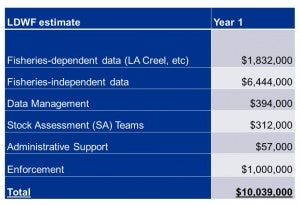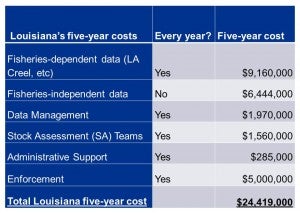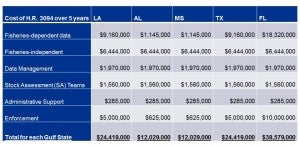By Priya Sundareshan
In recent years, the Gulf of Mexico red snapper fishery has featured both a tremendous recovery and ongoing controversy. Through the stakeholder-driven process outlined by the Magnuson-Stevens Act (MSA), the Gulf of Mexico Fishery Management Council (appointed by Governors from all of the Gulf States) implemented a successful reform of the commercial sector of the red snapper fishery. One of the results has been a near tripling in the fishing quotas for both the recreational and commercial sectors in a matter of years. Despite this dramatic quota increase, federal recreational fishing seasons have shortened. The Council is currently considering proposals to reform and manage the recreational sector to maximize access.
At the same time, some resource users have sought federal legislation exempting the fishery from the very system that helped the red snapper population rebound. Specifically, H.R. 3094 proposes to transfer management for Gulf of Mexico red snapper to a new authority made up of only the directors of the Gulf state fish and wildlife agencies (who already maintain a vote on the current fishery management council). We oppose this approach because it could result in overfishing and make decision-making much less transparent, among other concerns. The bill passed the House Natural Resources Committee in June despite bipartisan concerns that it would undermine the conservation provisions of the MSA, and only after it was modified to prohibit any federal funds from being used by the new management authority. As a result, the Gulf States would have to find the resources to fund the extra work.
How much would it cost? In early July, Louisiana’s Department of Wildlife and Fisheries (LDWF) estimated what it would cost the state to conduct the activities involved in managing the federal red snapper fishery:
LDWF stated that biological sampling (represented by the large “fisheries-independent” cost category) would only be conducted once every five years. Therefore, over five years their total costs would be:
How much would the other Gulf States have to pay for red snapper management? Here’s a simple estimate, using LDWF’s numbers as a starting point and making the following assumptions:
- We assume that the costs of enforcement and collection of fisheries-dependent data depends on the relative length of Gulf of Mexico coastline of each state. To make it simple, we approximate that Texas has the same coastline length as Louisiana, Florida has twice Louisiana’s coastline, and Alabama and Mississippi are each one-eighth of Louisiana.
- We assume each state will still likely be required to employ the same number of biologists and staff as Louisiana estimates in order to perform the necessary data collection and analysis for the other categories.
Therefore, we estimate that the cost of red snapper management over five years to each state will be:
Thus, the combined five-year cost of H.R. 3094 for the five Gulf States would be $111,475,000, with the highest price tag being almost $40 million in Florida.
Gulf red snapper should remain under Council management to continue its successful rebuilding and because recreational innovation can happen under the current structure. But additionally, lawmakers both in the Gulf States and Congress should consider the potentially significant cost of this proposal.
Priya is member of EDF’s national policy team working to improve fisheries management in the United States.
Enviroshop is maintained by dedicated NetSys Interactive Inc. owners & employees who generously contribute their time to maintenance & editing, web design, custom programming, & website hosting for Enviroshop.




